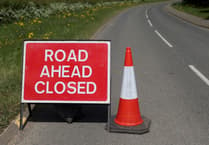EXPERTS believe the number of hawfinches in the Forest of Dean is improving, amid a UK-wide decline of wildlife numbers.
Forestry England volunteers have been surveying and ringing hawfinches in the Forest of Dean for many years. This has given us a better understanding of the species and led to adapting land management practices for their benefit.
They have found the number of hawfinches, along with other red-listed birds has improved in the area, and believe this could be down to factors such as the planting of unique shrub and tree species.
Rob, one of the hawfinch surveyors said: “The mix of cherry and hornbeam that has been planted has really helped the population of hawfinches. Females are in good breeding condition much earlier in the season, and we now have a small colony breeding in the area. Other species are also benefiting with chaffinches breeding here early too. This is very positive news.”
Forestry England said it continues the legacy of the Foresters’ Forest Landscape Project, which saw the planting of tree and shrub species with the aim of providing natural food for the birds.
James Williams, Beat Forester for Forestry England said: “By adapting our management, we can really make a difference and help wildlife. In one year alone, we planted over 3500 hawfinch-friendly tree species, such as Wych Elm, Hornbeam, Rowan, Cherry, Hawthorn, Blackthorn, Yew, and Holly and Scots Pine.
“These trees also benefit other forest wildlife, such as the White-letter Hairstreak butterfly, the caterpillar of which feeds on Wych Elm. Douglas fir, Japanese Cedar and Coast Redwood, these species were picked because of their suitability for the specific site conditions present and their resilience to diseases.”
Bird species in the UK are graded red, amber or green depending on their level of conservation concern; with those that have either suffered severe declines, or are threatened with global extinction, appearing on the red list of species of high conservation concern.
Kate Wollen, Area Ecologist for Forestry England said: “The state of wildlife in the UK does make for gloomy reading, but here in the Forest of Dean there is better news to be found, and we are lucky to have birds on the red list that breed here annually.”
“These include willow tit, wood warbler, hawfinch, cuckoo, spotted flycatcher, marsh tit, woodcock, lesser-spotted woodpecker, tree pipit, greenfinch and mistle thrush. Many others are on the amber list such as pied flycatcher, dipper, willow warbler and song thrush.”
Forestry England is optimistic that by working closely with experts, surveying, adapting management practices and careful tree selection. The decline in bird species will be reversed and species may once again flourish.
The Forest of Dean is very popular for wildlife experts, largely due to its unique population of diverse wildlife, and incredible landscape. This year, audiences were captivated in Chepstow’s Art Space by Gareth Jones, a member of the Gloucestershire Raptor Monitoring Group. He discussed his experiences observing wildlife in the Forest and showed attendees professional videos and photographs.





Comments
This article has no comments yet. Be the first to leave a comment.